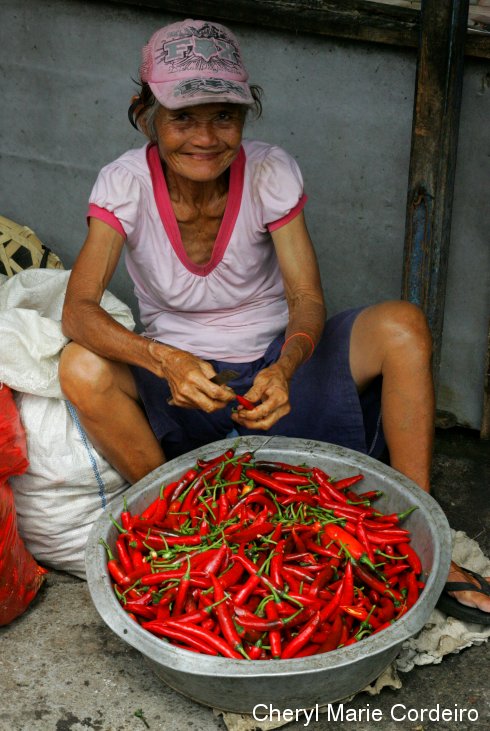
Along the side streets towards Pasar Badung in Denpasar, off Jl. Gajah Mada, you’ll find a small curry shop passionately preparing the foundational ingredients to many local dishes.
Text and Photo © JE Nilsson and CM Cordeiro 2012
The daily trading activities in Southeast-Asia (SE-Asia) are still focused around the centrally located wet markets. Located as they often are at traditional crossroads of land and waterways, they are the natural center of the community with space for religious ceremonies as well as today, offering convenient parking lots for cars and mopeds. Around these markets are also the arteries of the supply chain of all kinds of supplies that will go into the products offered at the market.
Pasar Badung in Denpasar, Bali’s capital, is one of the largest wet markets on the island with four storeys of goods that range from ready cooked food sold just outside the building, to fresh fruits, vegetables, fish, meat, preserved foods, spices, cakes, buns, biscuits, up to and including almost all items for the kitchen and household should you need them.
Clothing for men, women and children can be found on the upper floors of the market. Perhaps in close comparison in terms of array of and combination of goods sold would be that found in the heart of Chinatown or Little India in modern Singapore, though true wet markets now tend to have a space of their own these days.
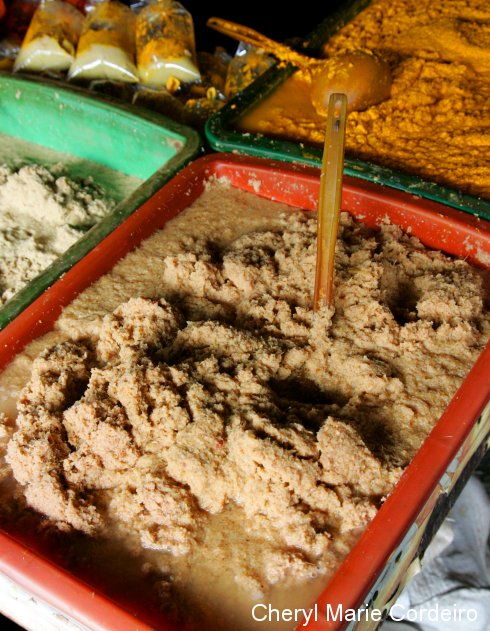
Ground shallot, lemongrass, ginger and garlic are just some items that make the culinary foundation of many local Indonesian fare that is also found in Sinagpore Nonya and Malay cuisine.
In the seemingly haphazard and busy streets leading up to the market were cars and scooters with hardly any space to manoeuvre. A no nonsense air of focused energy, with enough time for laughter or a smile more common here than in China’s morning markets for example, painted the surrounding web of
interconnected supply chains of goods and services that contributed to the workings of this daily trade in pleasant colors.
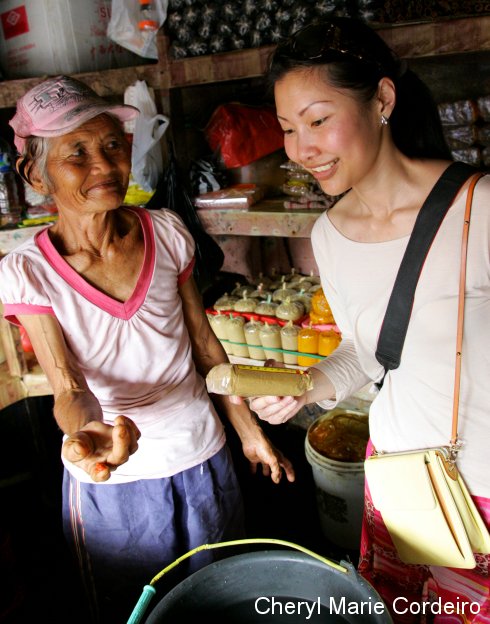
A dab of bright red, freshly ground chilli that she was telling how to use in cooking.
Along one of these lanes we also found one representative of a disappearing art, a curry man or in this case, two curry ladies (one of whom is pictured). Meeting these ladies brought me back to the time when I was growing up in Singapore, where at the market in Bedok South, there was a man who came from India, who had specialist knowledge in exactly curry making and the various pastes that made for the foundation to different types of curried dishes.
If you had vegetable, fish, chicken or lamb that you wanted variation on, he could recommend various combinations of spices that complemented each other to help create a symphony of flavours at your home for you – all you needed to do was to ask his advice and he would be happy to share his knowledge. Since then, he has moved on, and I have severely missed a culinary gem of an expert when it came to curry paste or rumpah making.
Imagine my absolute delight and awe when I came across these ladies right here in Denpasar, who in their native language and gestures, tried in great enthusiasm to share with me their paste grinding technique, what each paste consisted of and what they could be used for. I perfectly understood them and it is this moment of an encounter that I will bring with me home, as a memory from Bali.
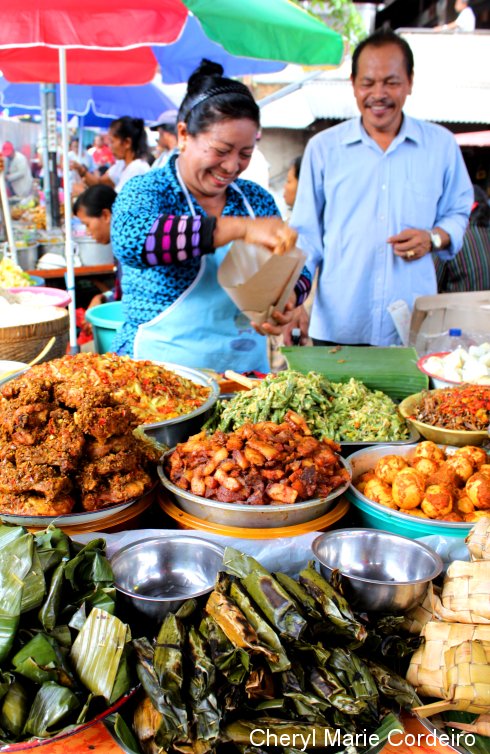
Street food, a staple of rice with mixed vegetables and meat.
Another scene at this market, common also in other SE-Asian countries, but one that has long since disappeared on the Singapore scene since after the 1960s is street food. Just adjacent to the car park to Pasar Badung, you’ll find under the protective shades of colourful umbrellas, a variety of Balinese fare that locals purchase much as a ‘drive through’. One lady for example, hardly got off her scooter when she purchased a late breakfast for her family, with helmet still on, she negotiated four packages of rice with various vegetable and meat side dishes that included drinks, all to be taken with her.
There is to a large extent, much socializing too during these street hawker food purchases, many of whom are regular customers and who help keep alive the local exchange of daily news and latest updates of neighbours and friends.
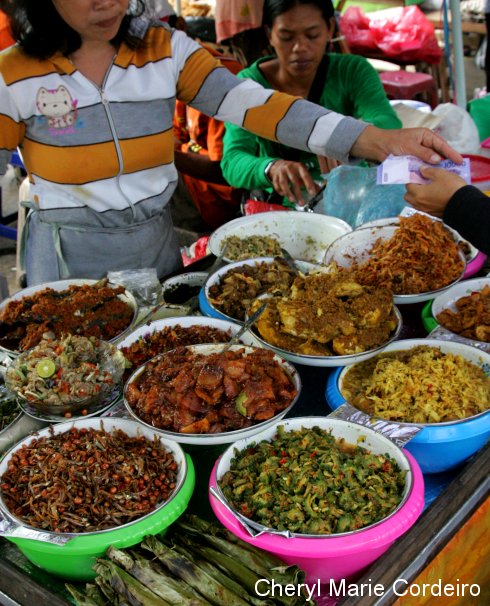
Each street stall offers variations of their own in vegetables and meat dishes.
Other features of the SE-Asian wet market that are common sight in the region but quite unseen in Scandinavia is how poultry, meat and fish are stored unrefrigerated in the markets overnight under tepidly humid conditions, or that these items are often seen sold alongside with trash, open drains and insects. One simply takes these as part of what wet marketing is all about in SE-Asia. Then again, it works and the question is, do we really prefer food that is chemically prepared to stay fresh forever to food that is actually handled naturally?
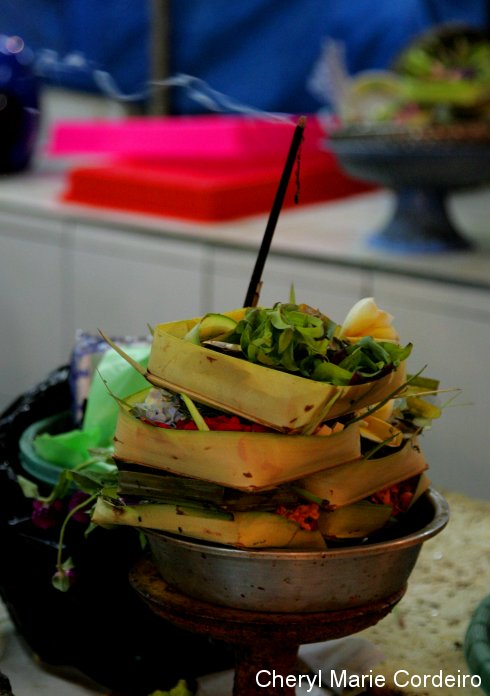
Caning sari, a Hindu tradition and offering in gratitude to the Gods.
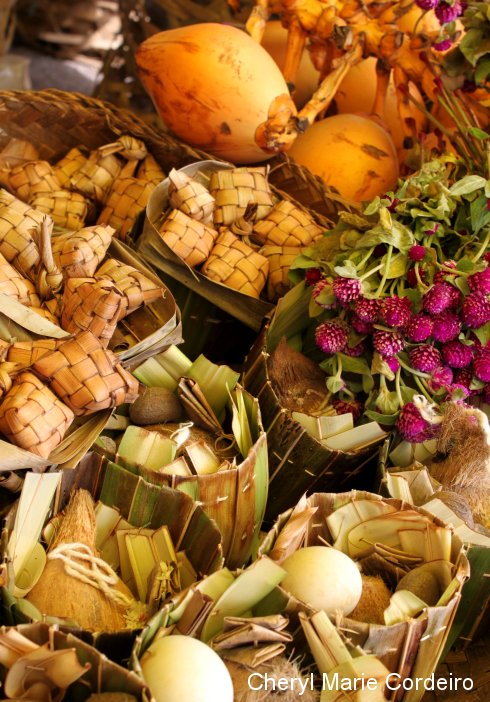
Offerings are made three times daily.
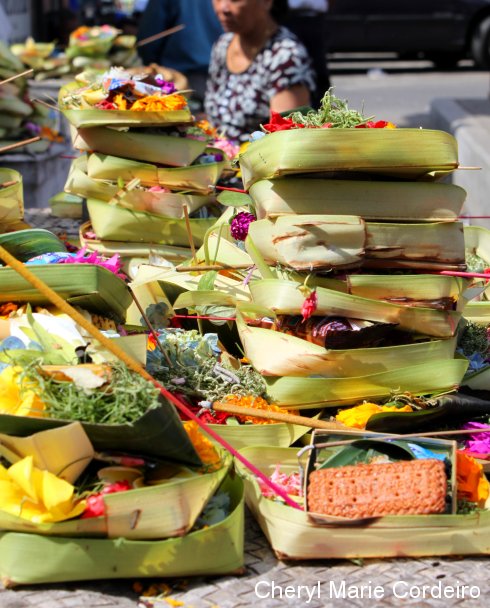
While flowers, grains of rice and incense are what are most commonly offered, here in one woven basket, a biscuit.
But there exists a time limit to these scenes, just as they were found in the mid-1900s in Singapore. These wet market features observed today in Bali will in time disappear with the mechanicss of modernization and with that, the resulting change in social structure and social networking will follow, so that these scenes now already hit a note of nostalgia with me when visiting this island. The resonance of the activities of this market was certainly one that indicated a thriving and bustling local economy, not in the least due to tourism – a sign of progress, else just time moving on.
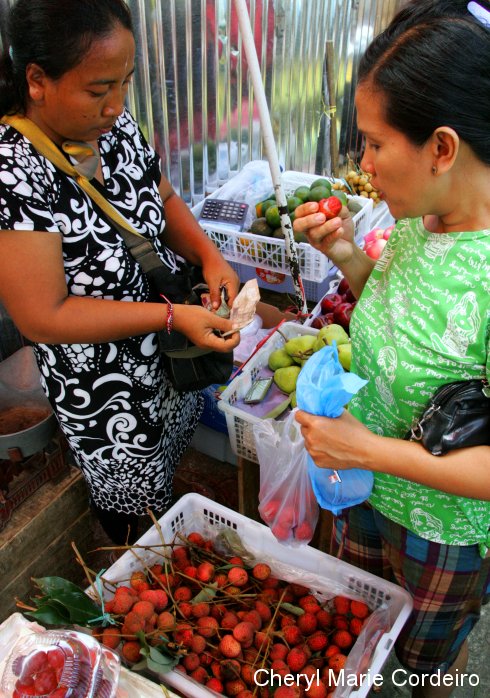
Exotic from East and West – lychee alongside red grapes.
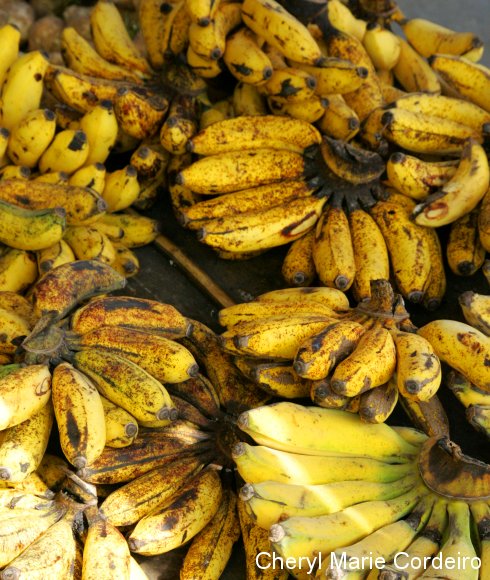
Bananas, a staple fruit in Southeast-Asia that makes for a wonderful array of desserts from ice-cream to goreng pisang.
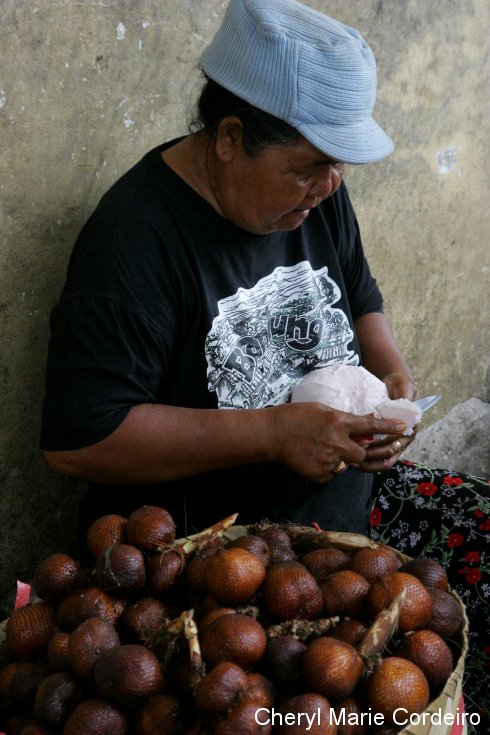
A basket filled with buah salak or snake fruit, described after its thin roughened skin that resembles the dry peel of a snake.
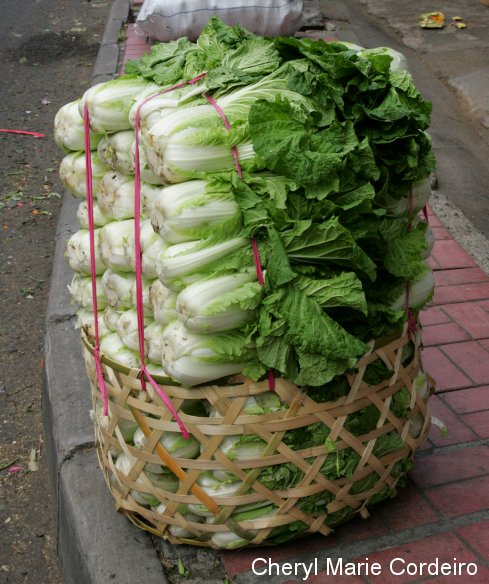
A basket of Chinese ‘bai chai’ in the midst of transport. Usually these large baskets are balanced and carried atop the head, here this basket lays resting, awaiting for its next leg in transportation.
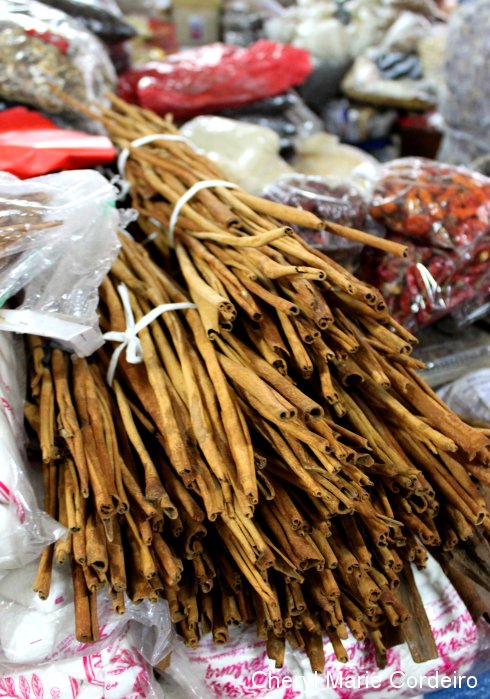
It was during the 1600s and 1700s that Europeans came to these Indus islands to trade in spices – here, sticks of cinnamon bark that one can acquire by the kilo.
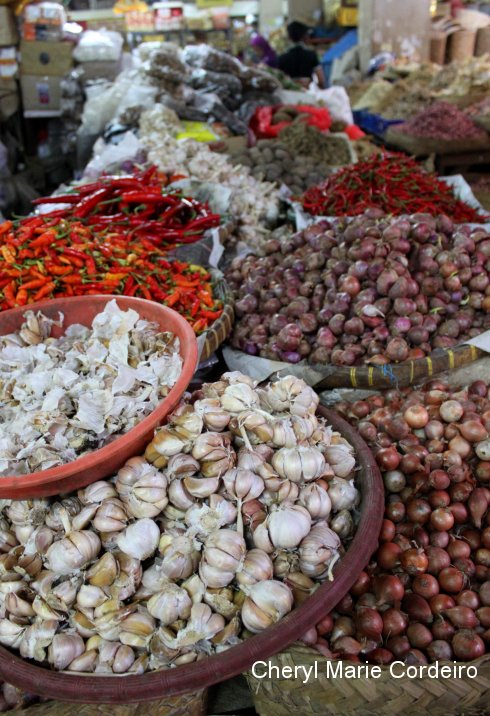
Garlic and shallots, most to be made into a paste called ‘rumpah’ for local fare and cooking.
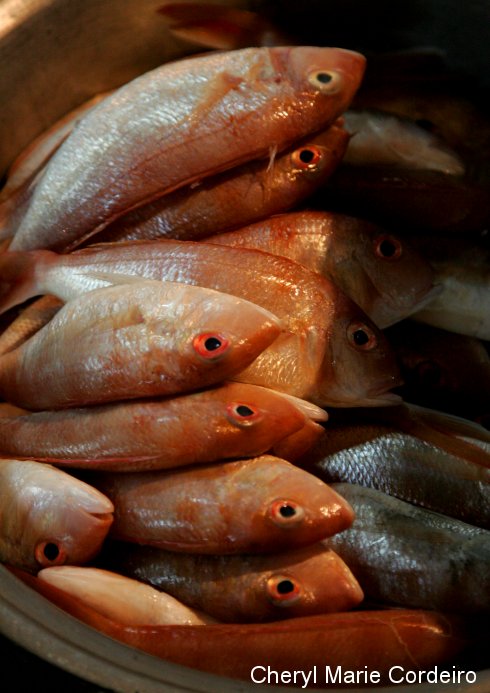
A variety of fish are sold at Pasar Badung…
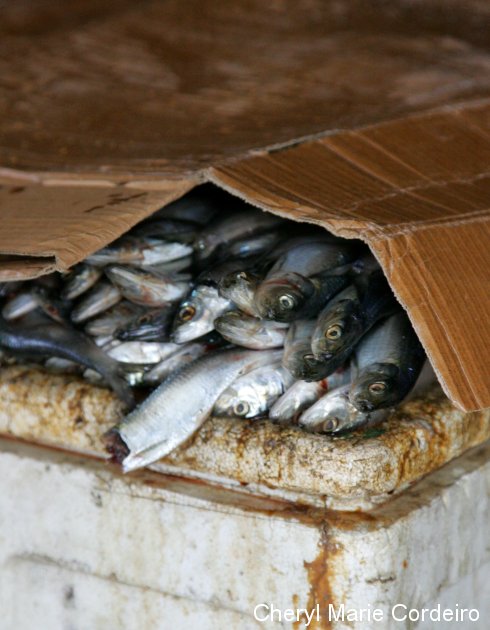
…stored in as numerous manners.
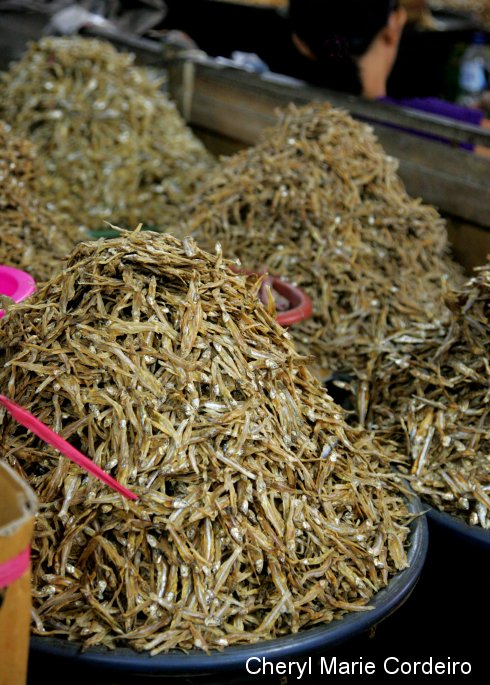
Preserved and dried fish are also on the menu in local fare. Here, piles of dried ikan bilis, found most common fried with a sprinkle of sugar and roasted groundnuts.
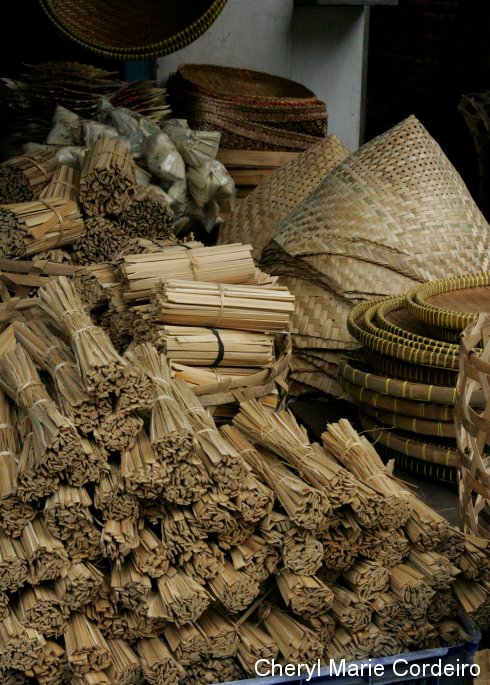
Functional items made of straw from satay sticks to place mat, food covers and hats.
There are many gems of experiences to be discovered on this island, much of it has to do with the courage of visitors and guests to explore beyond the designated tourist spots – take a walk in the surrounding lanes to the market for example, and explore supplier shops to the main market. This act in itself could well present an opportunity to an interesting meal at a coffeeshop that perhaps only locals would patron, thereby experiencing a lifestyle that is authentically Balinese.